Saint Paul Evangelical Lutheran Church of the Unaltered Augsburg Confession
323 1st Ave SW Taylorsville North Carolina
For Jews request a sign, and Greeks seek after wisdom; but we preach Christ crucified, to the Jews a stumbling block and to the Greeks foolishness, but to those who are called, both Jews and Greeks, Christ the power of God and the wisdom of God. 1 Cor 1 22-24
History of St. Paul 1892 to present
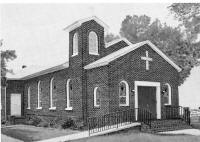
On August 13, 1892, Lutherans who belonged to Friendship and Salem congregations and a few others living in Taylorsville met and organized a congregation in Taylorsville under the leadership of Daniel J. Settlemyre. 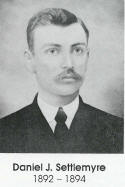 The name Saint Paul was chosen for the new congregation and a constitution was adopted. A decision was reached to affiliate with the Tennessee Synod.
The name Saint Paul was chosen for the new congregation and a constitution was adopted. A decision was reached to affiliate with the Tennessee Synod.
When Pastor Settlemyre left the church in Taylorsville the 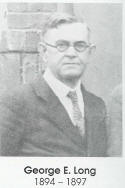 Rev. George E. Long of Catawba County took over the pastorate, serving St. Paul until 1897. During this period the first parsonage of the church was built, however it was not occupied until 1905 as the pastors who served the three congregations, St. Paul, Salem , and Friendship maintained their homes in Catawba County.
Rev. George E. Long of Catawba County took over the pastorate, serving St. Paul until 1897. During this period the first parsonage of the church was built, however it was not occupied until 1905 as the pastors who served the three congregations, St. Paul, Salem , and Friendship maintained their homes in Catawba County.
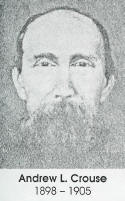 Pastor A.L. Crouse succeeded Pastor Long and served from 1898 to 1905. He stood firm on the Biblical truths and the creeds and confessions of the Lutheran Church. He instilled this same loyalty in the hearts of those people whom he served. It was not long until Pastor Crouse became unhappy being in the Tennessee Synod because of its liberal teachings and became interested in the Evangelical Lutheran Synod of Missouri, Ohio, and other states. In 1904 Pastor Crouse was suspended from the Tennessee Synod because of a split over doctrine in the St. Stephen congregation, which he also served. This led to his joining the Missouri Synod. A portion of St. Stephen's members went with Pastor Crouse as did Salem and St. Paul. Thus in 1905, St. Paul and Salem applied for and were received into membership with the English district, Missouri Synod, and received financial assistance from the English District for many years.
Pastor A.L. Crouse succeeded Pastor Long and served from 1898 to 1905. He stood firm on the Biblical truths and the creeds and confessions of the Lutheran Church. He instilled this same loyalty in the hearts of those people whom he served. It was not long until Pastor Crouse became unhappy being in the Tennessee Synod because of its liberal teachings and became interested in the Evangelical Lutheran Synod of Missouri, Ohio, and other states. In 1904 Pastor Crouse was suspended from the Tennessee Synod because of a split over doctrine in the St. Stephen congregation, which he also served. This led to his joining the Missouri Synod. A portion of St. Stephen's members went with Pastor Crouse as did Salem and St. Paul. Thus in 1905, St. Paul and Salem applied for and were received into membership with the English district, Missouri Synod, and received financial assistance from the English District for many years.
Until this time the pastors who served Salem and St. Paul lived in Catawba County. Frequently, high waters and sands in the Catawba River made crossing most difficult. Severe winters with snow storms and bad roads made traveling that distance with horse and buggy impossible. This caused interruption both in church service and catechetical instruction. Sometimes services were held on Saturday morning or afternoon, Sunday morning or afternoon or sometimes not at all.
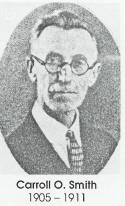 In 1905 Pastor C.O. Smith of Catawba County was called by St. Paul and the Salem congregations. He moved into the Taylorsville parsonage in 1907 and served the churches until 1911. The parsonage was owned jointly by St. Paul, Salem and Friendship churches until 1911 when Friendship sold its interest to St. Paul.
In 1905 Pastor C.O. Smith of Catawba County was called by St. Paul and the Salem congregations. He moved into the Taylorsville parsonage in 1907 and served the churches until 1911. The parsonage was owned jointly by St. Paul, Salem and Friendship churches until 1911 when Friendship sold its interest to St. Paul.
From 1912 to 1916 the church was without a regular pastor and its needs were bet by two supply pastors from Catawba County. Pastor C.O. Smith, who had returned to Conover after leaving St. Paul and Pastor Martin Kuegele.
In 1916 the Rev. Robert Lail was installed as pastor of St. Paul and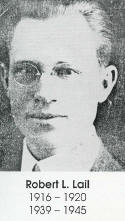 Salem together. He and his family occupied the Taylorsville parsonage. Until then the two congregations had not felt able to support a minister, and the District Mission Board had not seen its way clear to help. That is the reason for the vacancy from 1912 to 1916. In 1916 it is recorded that the "Mission Board has now seen fit to lend a helping hand and has taken over their part of the work." Pastor Lail served until 1920 when he moved back to the church in Catawba, which for four years he had been serving along with St. Paul and Salem.
Salem together. He and his family occupied the Taylorsville parsonage. Until then the two congregations had not felt able to support a minister, and the District Mission Board had not seen its way clear to help. That is the reason for the vacancy from 1912 to 1916. In 1916 it is recorded that the "Mission Board has now seen fit to lend a helping hand and has taken over their part of the work." Pastor Lail served until 1920 when he moved back to the church in Catawba, which for four years he had been serving along with St. Paul and Salem.
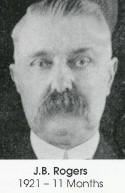 A Call was then extended to Pastor J.B. Rogers of Conway, Missouri. He accepted the call and was installed at St. Paul on January 16, 1921. He served the congregation only eleven months when he suffered a heart attack and was called to his heavenly home. A stained glass window was placed in his memory in the sanctuary of our church.
A Call was then extended to Pastor J.B. Rogers of Conway, Missouri. He accepted the call and was installed at St. Paul on January 16, 1921. He served the congregation only eleven months when he suffered a heart attack and was called to his heavenly home. A stained glass window was placed in his memory in the sanctuary of our church.
The next pastor to serve St. Paul was James L. Summers. A meeting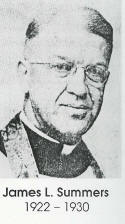 of the Southeastern Conference of the English District was held at St. Paul on May 7, 1922 and in attendance was a young pastor by the name of James L. Summers. He impressed some members of St. Paul so much that he was extended a call, which he accepted. He served St. Paul from 1922 to 1930.
of the Southeastern Conference of the English District was held at St. Paul on May 7, 1922 and in attendance was a young pastor by the name of James L. Summers. He impressed some members of St. Paul so much that he was extended a call, which he accepted. He served St. Paul from 1922 to 1930.
During 1929 a young man graduated from the seminary in St. Louise. 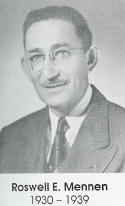 His name was Roswell R, Meenen, of Conover. When Pastor Summers accepted a call elsewhere, candidate Roswell Mennen was asked to accept the pastorate of St. Paul as his first parish. He was installed February 1, 1930 and remained there until 1939. This decade was a turbulent yet an exciting time in the history of the congregation. On the night of June 21, 1931 a tornado struck and demolished the original frame church leaving the congregation without a place to worship. With the aide of the English District, the church was able to rebuild.
His name was Roswell R, Meenen, of Conover. When Pastor Summers accepted a call elsewhere, candidate Roswell Mennen was asked to accept the pastorate of St. Paul as his first parish. He was installed February 1, 1930 and remained there until 1939. This decade was a turbulent yet an exciting time in the history of the congregation. On the night of June 21, 1931 a tornado struck and demolished the original frame church leaving the congregation without a place to worship. With the aide of the English District, the church was able to rebuild.
On January 17, 1932 the new brick church building (essentially the present building) was dedicated. In the late thirties under the pastorate of Pastor R. E. Mennen a large Sunday School room was added to the new brick church. This room was removed when a new parish hall was built. This hall provided space for the growing Sunday School classes.
In 1939, Pastor Lail was again called to St. Paul and Salem and served until 1946. The present parsonage was built during his pastorate and was dedicated on July 15, 1945. During the year 1939 the Southeastern District of the Missouri Synod was established and St. Paul and Salem joined this district since they were in their geographical area.
Following pastor Lail, Pastor L.F. Westerman served the congregation for 2 years (1947-1949)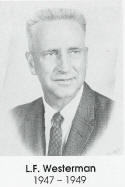
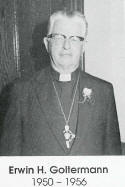 In 1950 Pastor Erwin H. Golterman was called to lead the congregation. He served faithfully until 1956. While he was at St. Paul the present parish hall was built and dedicated in July of 1951. He was the pastor also when the church was renovated and rededicated on June 20, 1954.
In 1950 Pastor Erwin H. Golterman was called to lead the congregation. He served faithfully until 1956. While he was at St. Paul the present parish hall was built and dedicated in July of 1951. He was the pastor also when the church was renovated and rededicated on June 20, 1954.
In 1956 St. Paul and Salem decided to become self-supporting and no longer asked the District Mission Board for financial assistance. At this time the Rev. George Luecke was the pastor of St. Paul. He served from 1956 until 1958.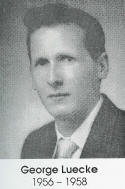
When Pastor Luecke left St. Paul, the Rev. Henry W. Wodke of 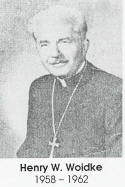 Cleveland, Ohio was called and installed in 1958 and served until his death on June 10, 1962. He suffered a heart attack and was found in his garden on a Sunday morning.
Cleveland, Ohio was called and installed in 1958 and served until his death on June 10, 1962. He suffered a heart attack and was found in his garden on a Sunday morning.
Pastor C.W. Long, the son of the second pastor of St. Paul was called and served until his death in 1969. He was the third pastor who died while serving St. Paul. The other two were Pastor Rogers and Pastor Woidke.
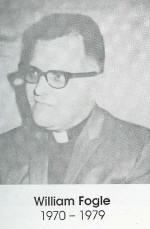 When Pastor Long died the Rev. William Fogle was called and served the congregation faithfully from 1970 to 1979. During his pastorage the congregation reach the largest number of communicant members (98) and Sunday School children in the 100 years of St. Paul's existence. While he was at St. Paul the new educational wing of the parish hall was built. This building was dedicated on May 14, 1974
When Pastor Long died the Rev. William Fogle was called and served the congregation faithfully from 1970 to 1979. During his pastorage the congregation reach the largest number of communicant members (98) and Sunday School children in the 100 years of St. Paul's existence. While he was at St. Paul the new educational wing of the parish hall was built. This building was dedicated on May 14, 1974
The next pastor of St. Paul was the former missionary, R. Keith Lee. He was installed as pastor on February 24, 1980 and served until 1983. He will always be remembered because of the importance he placed upon adult education. During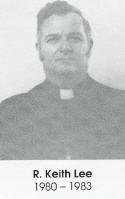 Pastor Lee's pastorate a bequest of $135,000.00 was left to St. Paul by on of her members, Grafton Burgess.
Pastor Lee's pastorate a bequest of $135,000.00 was left to St. Paul by on of her members, Grafton Burgess.
Shortly after Pastor Lee's departure, the Rev. George Mennen, of Conover was invited to conduct services until St. Paul could find a new pastor. Pastor Mennen was born in Catawba County, June 6, 1915. At the time of his father, the late Rev. George E. Mennen Sr., was pastor of Bethel Lutheran Church in Catawba County. After he finished the Seminary, George Jr., was the assistant pastor of a large 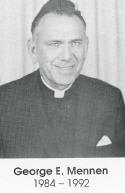 Lutheran church in Akron, Ohio and during World War 2 became a chaplain with the U.S. Air Force. He served as a chaplain for 25 years and retired in 1967, only to become the pastor of St. John Lutheran Church in Columbus, Ohio, where he served for seven years. He was then called to Holy Cross in Newton, North Carolina and after serving his congregation for six years he retired from the ministry in 1980. For three years there after he supplied and assisted at various congregations in Catawba County.
Lutheran church in Akron, Ohio and during World War 2 became a chaplain with the U.S. Air Force. He served as a chaplain for 25 years and retired in 1967, only to become the pastor of St. John Lutheran Church in Columbus, Ohio, where he served for seven years. He was then called to Holy Cross in Newton, North Carolina and after serving his congregation for six years he retired from the ministry in 1980. For three years there after he supplied and assisted at various congregations in Catawba County.
On Thanksgiving Say 1983, Pastor Mennen preached at St. Paul and this led to his being called as fulltime pastor of St. Paul. He was installed on March 24, 1984 and served the congregation until 1992, when the church celebrated its 100th anniversary. Rev. George E. Mennen is the younger brother of Rev. Roswell Mennen, who was pastor at St. Paul from 1930-1939.
During the pastorate of Rev. George E. Mennen, the following things were accomplished. In 1987, the lot adjacent to the church and parish hall was purchased and improved. The cost was approximately $23,000.00 The money to purchase the property was from the Grafton Burgess bequest. In 1987, $50,000.00 from the Grafton Burgess bequest was set aside for a religious education fun which would grant a scholarship to any adult person of the congregation, who would enter full time church work within the Missouri Synod. During that same year the entrance to our church was altered and the narthex greatly enlarged. The year after, the constitution of the church was amended and the women of the congregation were granted voting privileges. Following this action, the parish hall was renovated with a new heating and cooling system. All this money came from the Burgess bequest.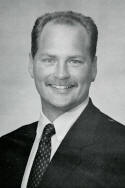
Pastor George E. Mennen returned on August 2, 1992 after 53 years in the ministry. His successor was James Deloach, who was ordained and installed on August 9, 1992. Pastor Deloach served the congregation for 2 years when Pastor Donald R. Hunter, the current pastor of St. Paul, was installed in March of 1995.
Service Times:
-
Private Confession and Absolution: 9am Sunday
-
Sunday School Opening: 9:45am
-
Sunday School: 10am
-
Divine Worship: 11am
-
Bible Study Wednesday evening: 7pm